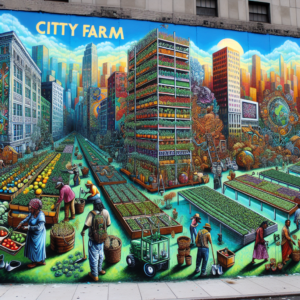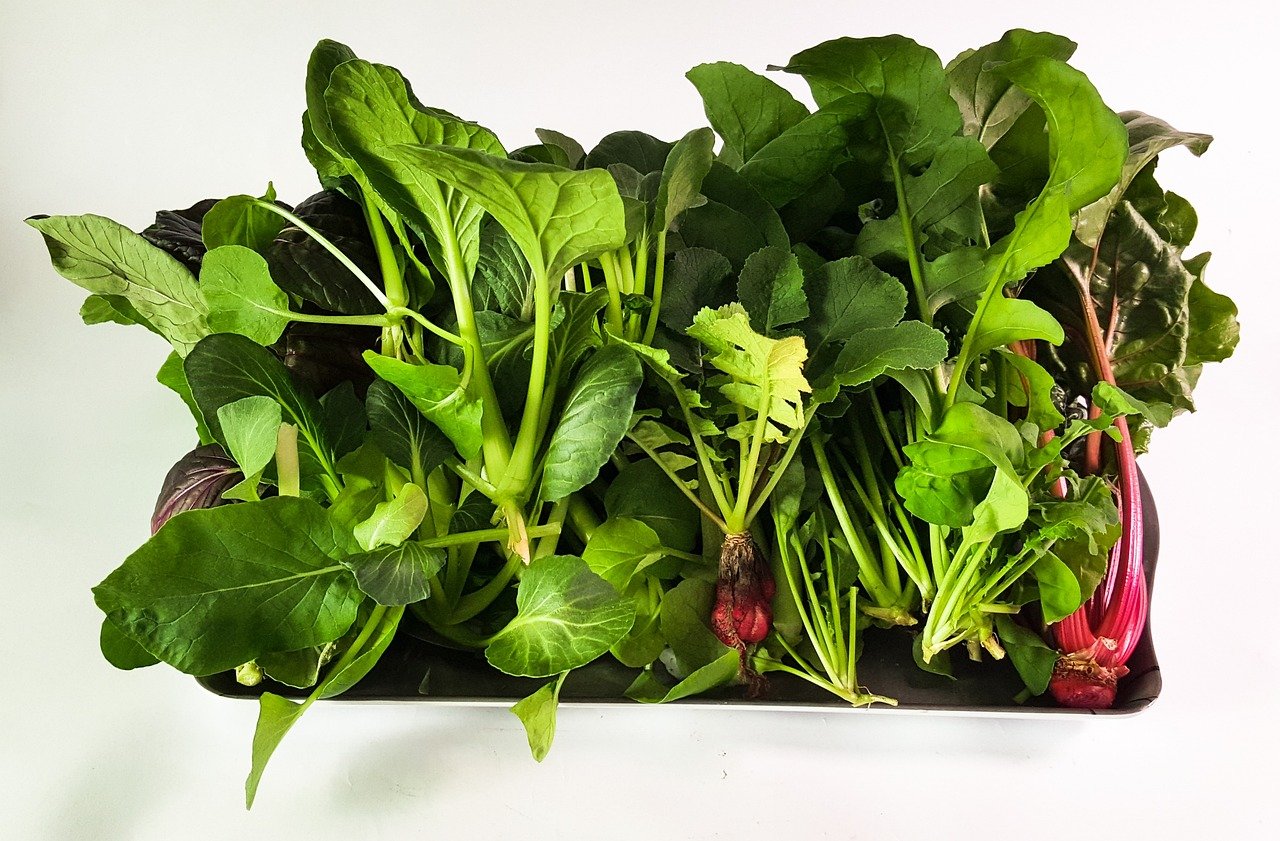
Imagine a world where cities thrive with fresh, nutritious produce grown right in the heart of concrete jungles. This is no longer a distant dream but a growing reality thanks to urban hydroponics. By using this innovative and sustainable method of vertical farming, urban spaces are being transformed into verdant oases of green, allowing communities to enjoy the benefits of locally-grown food while reducing the strain on traditional agricultural systems. In this article, we will explore the fascinating world of urban hydroponics and discover how it is revolutionizing urban farming for a healthier, greener future.
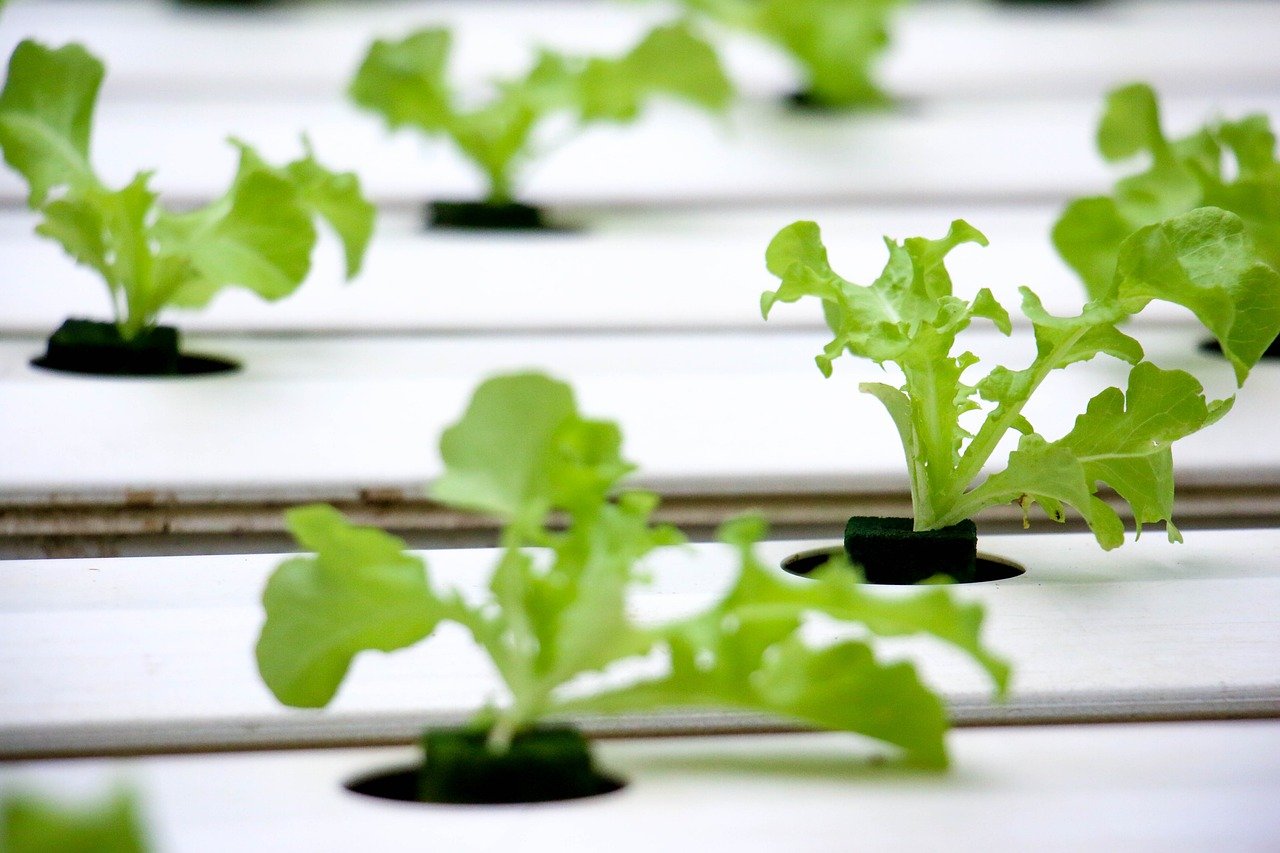
1. What is Urban Hydroponics?
1.1 Definition of Urban Hydroponics
Urban hydroponics refers to a method of farming that involves growing plants in a soil-less environment and using a nutrient-rich water solution to provide essential nutrients. Unlike traditional farming methods that rely on soil, urban hydroponics relies on water as the growing medium. This allows for the cultivation of crops in urban settings where space for traditional farming is limited.
1.2 History of Urban Hydroponics
The concept of hydroponics dates back to ancient civilizations such as the Hanging Gardens of Babylon, where plants were grown using a water-based system. However, the modern application of hydroponics in urban environments can be traced back to the 1930s and 1940s when researchers began experimenting with this method to address food shortages during World War II. Since then, urban hydroponics has evolved significantly and has gained popularity as a sustainable farming solution in urban areas.
2. Advantages of Urban Hydroponics
2.1 Water Conservation
One of the major advantages of urban hydroponics is its ability to conserve water. Traditional farming methods require substantial amounts of water to irrigate the soil. In contrast, hydroponics systems recirculate water, resulting in significant water savings. With increasing concerns about water scarcity, urban hydroponics presents a sustainable solution by reducing water usage while still allowing for the growth of healthy, nourishing crops.
2.2 Efficient Resource Utilization
Urban hydroponics maximizes resource utilization by delivering nutrients directly to the plant roots. This targeted delivery system ensures that plants receive the necessary nutrients in optimal quantities, eliminating wastage. Additionally, hydroponic systems can be designed to minimize fertilizer use, reducing the environmental impact associated with chemical fertilizers commonly used in traditional farming.
2.3 Year-round Crop Production
Another advantage of urban hydroponics is its ability to facilitate year-round crop production. By providing controlled environmental conditions, such as temperature, humidity, and lighting, hydroponic systems allow for crop cultivation regardless of the external climate. This means that urban farmers can continuously grow fresh produce, reducing the dependence on seasonal availability and transportation from distant farming regions.
2.4 Space Optimization
Urban environments often experience space limitations, making traditional farming impractical. However, urban hydroponics overcomes this constraint by allowing plants to be grown vertically or in compact systems. Vertical farming techniques, for example, utilize vertical space to maximize crop production per square foot. This makes urban hydroponics an ideal solution for cities where land availability is limited but there is a need for increased food production.
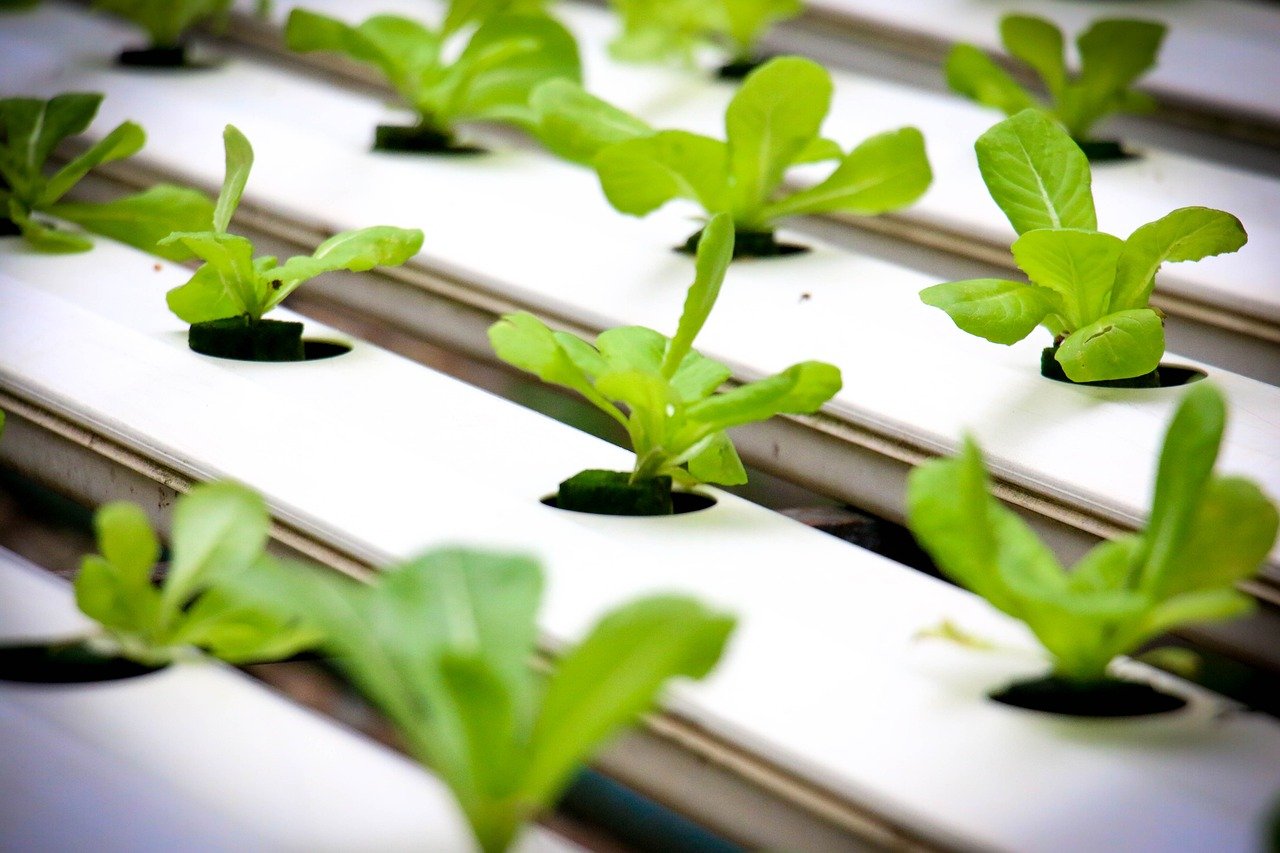
3. Types of Urban Hydroponic Systems
3.1 Nutrient Film Technique (NFT)
The Nutrient Film Technique (NFT) is a popular hydroponic system that involves a shallow stream of nutrient-rich water flowing over the roots of plants. The roots are suspended in a thin film of water which provides continuous access to essential nutrients. This system is efficient and requires minimal water usage, making it suitable for urban environments.
3.2 Deep Water Culture (DWC)
Deep Water Culture (DWC) is another common hydroponic system where plants are suspended in a solution of water and nutrients. The plant roots are constantly submerged, allowing for efficient nutrient uptake. DWC is relatively easy to set up and maintain, making it a popular choice for beginners in urban hydroponics.
3.3 Aeroponics
Aeroponics is a high-tech hydroponic system where plant roots are suspended in air and periodically misted with a nutrient-rich solution. This system provides plants with optimal amounts of oxygen and nutrients, resulting in fast growth and high-quality produce. While aeroponics requires more technical expertise and equipment, it offers the advantage of maximizing space efficiency and water conservation.
3.4 Drip System
The drip system is a widely used hydroponic method that involves delivering a controlled amount of nutrient solution directly to the plants’ root zone through drip emitters. This method allows for precise control of nutrient delivery and minimizes water waste. Drip systems are versatile and can be easily scaled up or down, making them suitable for urban hydroponics of varying sizes.
3.5 Ebb and Flow (Flood and Drain)
Ebb and Flow, also known as Flood and Drain, is a hydroponic system where plants are periodically flooded with nutrient-rich water and then allowed to drain. This cyclic flooding and draining mimic natural watering cycles and promote healthy root growth. Ebb and Flow systems are relatively simple to set up and are commonly used in urban hydroponics for growing a variety of crops.
4. Required Components and Equipment for Urban Hydroponics
4.1 Growing Mediums
In urban hydroponics, growing mediums are used to support plant roots without soil. Commonly used growing mediums include perlite, vermiculite, coconut coir, and rockwool. These growing mediums provide aeration, moisture retention, and support for the plant roots, ensuring healthy growth.
4.2 Nutrient Solutions
Nutrient solutions play a critical role in urban hydroponics by providing essential elements for plant growth. These solutions are typically made by mixing specific ratios of water-soluble fertilizers, ensuring a balanced supply of nutrients. Hydroponic nutrient solutions are tailored to the specific needs of different plant species and growth stages.
4.3 Lighting Systems
Since urban hydroponics often takes place in controlled indoor environments, artificial lighting systems are used to provide the necessary light energy for photosynthesis. LED lights are commonly used due to their energy efficiency and the ability to customize light spectra to suit plant growth requirements. Proper lighting is essential to ensure optimal plant growth and crop yields.
4.4 pH and EC Meters
Maintaining the correct pH level and electrical conductivity (EC) of the nutrient solution is crucial for successful urban hydroponics. pH and EC meters are used to monitor and adjust these parameters as needed. The pH level affects nutrient availability, while EC indicates the nutrient concentration. Regular monitoring helps optimize nutrient absorption and prevent nutrient imbalances.
4.5 Automation Systems
As urban hydroponics can be labor-intensive, automation systems play a vital role in streamlining operations. Automated systems can control factors such as lighting, nutrient delivery, pH, and EC levels, temperature, and humidity. These systems help maintain optimal growing conditions, reduce manual labor, and ensure consistent crop production in urban hydroponics.
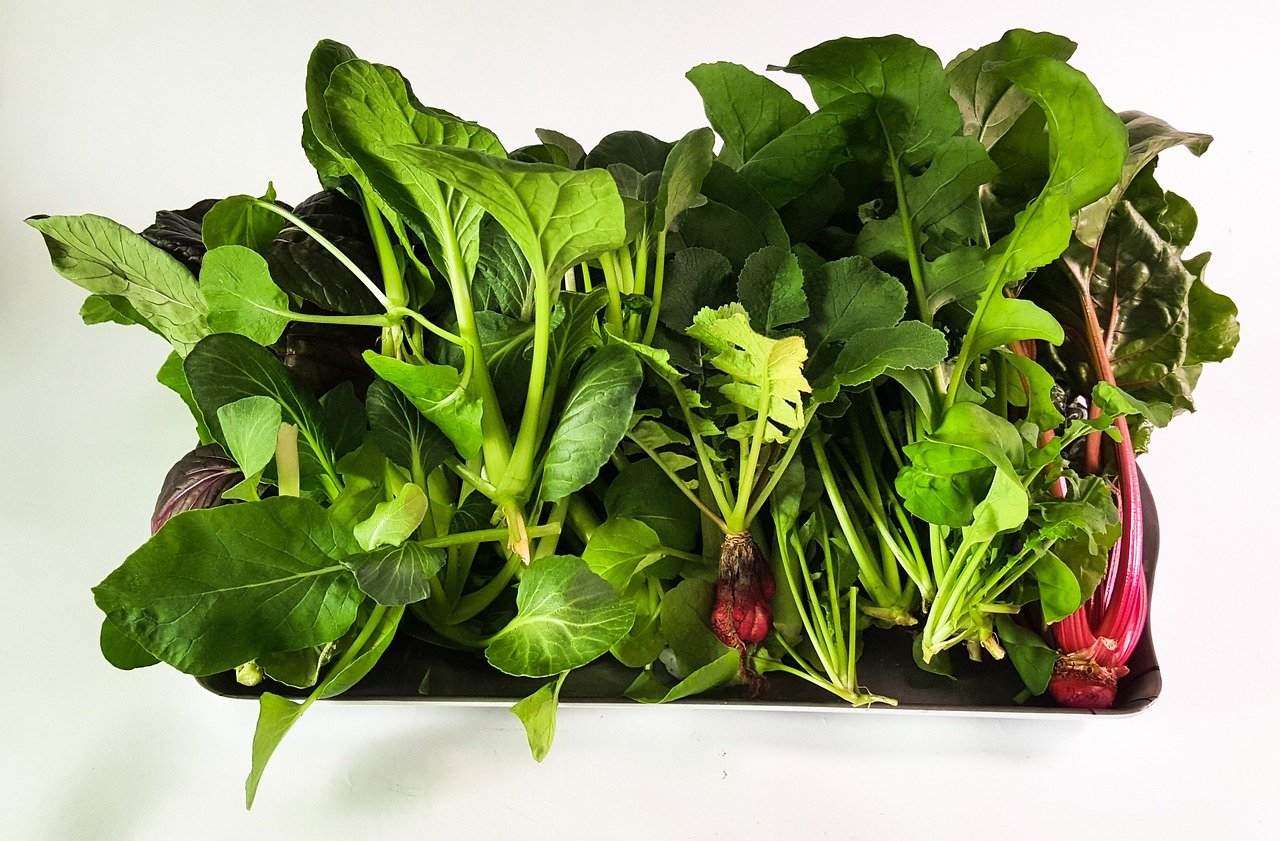
5. Best Plants to Grow in Urban Hydroponics
5.1 Leafy Greens
Leafy greens such as lettuce, spinach, and kale are well-suited for urban hydroponics. They have relatively short growth cycles and high nutrient requirements, making them ideal for efficient hydroponic systems. Leafy greens can be harvested continuously, providing a steady supply of fresh and nutritious produce.
5.2 Herbs
Herbs like basil, mint, parsley, and coriander thrive in urban hydroponics due to their smaller root systems and high demand in culinary applications. Hydroponic herb farming allows for year-round production and provides chefs, home cooks, and consumers with a reliable source of fresh herbs.
5.3 Tomatoes
Tomatoes are a popular crop to grow in urban hydroponics due to their high yield potential and demand. Hydroponic tomato plants can be trellised vertically, maximizing space utilization and promoting healthier fruit development. Hydroponic-grown tomatoes are known for their superior taste and quality.
5.4 Strawberries
Strawberries are well-adapted to hydroponic systems, as they have shallow root systems and thrive in controlled environments. Urban hydroponic strawberry farming allows for multiple harvests throughout the year, providing an abundance of delicious strawberries with minimal space requirements.
5.5 Peppers
Peppers, whether bell peppers or chili peppers, can flourish in urban hydroponics. With their compact growth habits and high market demand, peppers are a profitable choice for urban farmers. Hydroponic-grown peppers offer consistent yields and can be grown year-round, ensuring a continuous supply.
6. Urban Hydroponic Farming Techniques
6.1 Vertical Farming
Vertical farming is a technique that utilizes vertical space to maximize crop production in urban environments. By stacking multiple layers of hydroponic systems, vertical farms maximize productivity per square foot. This technique is particularly beneficial in areas with limited horizontal space, allowing for larger crop yields and increased food production.
6.2 Rooftop Farming
Rooftop farming involves utilizing the available rooftop spaces in urban areas for hydroponic farming. This technique optimizes unused rooftop areas, converting them into productive farms. Rooftop farms enable communities to grow fresh produce locally, reducing transportation distance and increasing food security.
6.3 Indoor Farming
Indoor farming refers to the cultivation of crops in completely controlled indoor environments. By eliminating external climatic variations, growers can achieve precise control over growing conditions. Indoor hydroponics can be implemented in warehouses, shipping containers, or specially designed indoor farms, allowing for year-round crop production regardless of external weather conditions.
6.4 Container Farming
Container farming involves converting shipping containers into self-contained hydroponic farms. These compact and mobile farming units are well-suited for urban hydroponics, as they can be placed in various locations, including vacant lots or underutilized spaces. Container farms offer flexibility and the ability to bring fresh, locally grown produce to urban communities.
7. Case Studies of Successful Urban Hydroponic Farms
7.1 Gotham Greens
Gotham Greens is a leading urban agriculture company specializing in hydroponic farming. They operate high-tech greenhouses in several cities, including New York and Chicago. Gotham Greens’ hydroponic farms produce a wide variety of leafy greens and herbs, supplying local markets with fresh, sustainably grown produce.
7.2 BrightFarms
BrightFarms is a hydroponic farming company that operates greenhouse facilities in urban areas across the United States. Their hydroponic farms use recirculating systems to grow a range of produce, including tomatoes, lettuce, and herbs. BrightFarms’ farms are strategically located near major cities, reducing transportation distances and promoting local food production.
7.3 Farm.One
Farm.One is a unique urban hydroponic farm located in New York City that specializes in growing rare, high-quality herbs, microgreens, and edible flowers. Their hydroponic farm is situated in a climate-controlled indoor environment, allowing for precise control over growing conditions. Farm.One supplies chefs, restaurants, and individuals with unique and exotic produce.
8. Challenges and Limitations of Urban Hydroponics
8.1 High Initial Costs
Urban hydroponics systems require initial investments in infrastructure, equipment, and technology. Setting up an efficient hydroponic system can be costly, especially for small-scale farmers or individuals starting with limited resources. However, as the demand for urban hydroponics grows and technological advancements continue, the costs are expected to decrease over time.
8.2 Technical Expertise Requirement
Successfully implementing and managing an urban hydroponic system requires technical expertise and knowledge. Farmers must understand the intricacies of hydroponics and the specific requirements of different crops. This technical expertise can present a barrier, especially for individuals new to hydroponics. However, with proper training and education, anyone can acquire the necessary skills to excel in urban hydroponic farming.
8.3 Energy Consumption
Hydroponic systems rely on artificial lighting, heating, and cooling systems to create optimal growing conditions. This increased energy demand can be a challenge in terms of sustainability. However, advances in energy-efficient technologies and renewable energy sources can help mitigate the environmental impact and reduce energy consumption in urban hydroponics.
8.4 Waste Management
The nutrient solutions used in hydroponics need to be carefully managed to prevent contamination and waste. Improper handling of nutrient solutions can lead to environmental pollution. Additionally, the disposal of used growing mediums and plant waste requires proper waste management practices. Urban hydroponic farmers must have protocols in place for sustainable waste management to ensure a minimal ecological footprint.
9. Role of Urban Hydroponics in Sustainable Food Production
9.1 Reducing Food Waste and Transportation
By growing food locally in urban areas, hydroponics reduces the need for long-distance transportation of produce. This eliminates the greenhouse gas emissions associated with transporting food over long distances. Additionally, by producing food closer to the consumer, urban hydroponics helps reduce post-harvest losses and waste that can occur during transportation.
9.2 Promoting Local Food Production
Urban hydroponics promotes the concept of “locally grown” food, enhancing food security and supporting local economies. By establishing urban hydroponic farms, cities can reduce their dependence on external food sources and stimulate local agricultural production. This strengthens regional food networks and reduces the vulnerability of urban populations to disruptions in the global food supply chain.
9.3 Enhancing Food Security
Urban hydroponics plays a crucial role in enhancing food security, particularly in densely populated urban areas where access to fresh, nutritious food can be limited. By enabling the production of fresh produce year-round, regardless of climate conditions, urban hydroponics ensures a steady supply of nutritious food. This is especially significant in areas with limited arable land, where traditional agricultural practices may be challenging or impossible.
10. Conclusion
10.1 Potential of Urban Hydroponics
Urban hydroponics offers a sustainable solution to address the challenges of urban farming. It maximizes resource utilization, conserves water, and optimizes space while providing year-round crop production. With advancements in technology and increasing interest in local food production, the potential for urban hydroponics is vast, offering opportunities for individuals, communities, and even commercial enterprises to contribute to a more sustainable and resilient food system.
10.2 Importance of Further Research
While urban hydroponics has shown immense potential, further research is vital to continue improving its efficiency, reducing costs, and addressing challenges. Research focusing on crop specific requirements, optimization of energy consumption, waste management solutions, and scalable systems will be essential to ensure the long-term sustainability and viability of urban hydroponics. By supporting and investing in research, we can unlock the full potential of urban hydroponics and contribute to a more sustainable future of food production.

